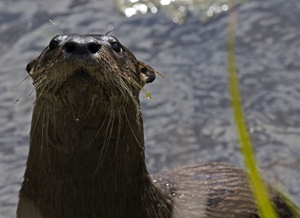Typically, the term “furbearer” is used to identify mammal species that have traditionally been trapped or hunted for their fur. Furbearers are a diverse group, including both large carnivores and smaller rodents.
These species, whose furs are traded internationally, sometimes in high volume, are managed by State or tribal conservation programs and the U.S. Fish and Wildlife Service (Service) closely monitors their harvest and trade to ensure their continued conservation.
Laws & Regulations
Certain native furbearer species have been listed in Appendix II of the Convention on International Trade in Endangered Species of Wild Fauna and Flora (CITES) since 1977 and include:

River otter emerges from water
Credit: Richard Crook/USFWS
- bobcat (Lynx rufus)
- river otter (Lontra canadensis)
- Canada lynx (Lynx canadensis)
- gray wolf (Canis lupus)
- brown bear (Ursus arctos)
Prior to issuing a CITES permit to export species of wildlife included in Appendix I and II of CITES, two findings must be made. The Division of Scientific Authority (DSA) must advise the Division of Management Authority (DMA) that such export will not be detrimental to the survival of the species, and DMA must be able to make a finding that specimens to be exported have not been obtained in violation of laws for their protection.
For information on the import or export of furbearer species, including the Service’s tag program, visit the Branch of Permits.

